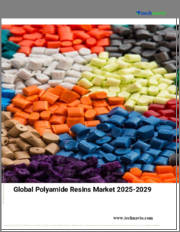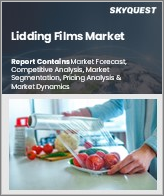
|
시장보고서
상품코드
1752336
특수 폴리아미드 생산능력, 생산량, 수급, 가격, 시장 예측 분석(2034년)Specialty Polyamide Capacity, Production, Demand-Supply, Pricing and Market Forecast Analysis, 2034 |
||||||
일반적으로 나일론으로 알려진 폴리아미드는 최초의 진정한 열가소성 엔지니어링 플라스틱으로 간주됩니다. "나일론"이라는 이름은 DuPont의 폴리아미드 제품의 초기 상품명에서 유래되었으며, 1939 년에 상업 생산이 시작되었습니다. 폴리아미드가 최초로 실용화된 것은 나일론 칫솔이며, 1939년 뉴욕 만국박람회에서 처음 선보인 여성용 스타킹이 그 뒤를 이었습니다. 이후 폴리아미드는 우수한 기계적 강도, 내피로성, 내열성, 내충격성, 화학적 내구성으로 인해 전 세계적으로 중요한 위치를 차지하게 되었습니다.
폴리아미드 6과 폴리아미드 6,6이 세계 시장의 대부분을 차지하며 총 수요의 약 95%를 차지합니다. 그러나 나머지 5%는 PA11, PA12, PA4/6, PA6/10, 방향족 폴리아미드 등 특수 폴리아미드로 구성되어 있습니다. 이러한 특수 등급은 표준 등급에 비해 열적, 기계적 특성이 향상되어 있습니다. 엔지니어링 등급 폴리아미드는 내열성, 치수 안정성, 종합 강도 측면에서 기존 범용 플라스틱보다 우수하여 내구성과 가혹한 환경에 대한 내성이 중요한 고성능 용도에 적합합니다.
용도 개요
특수 폴리아미드는 자동차, 소비재, 연포장, 전기 및 전자, 각종 산업용으로 사용되고 있습니다. 자동차 제조업체들은 환경 규제와 연비 기준을 충족하기 위해 엔진 효율을 높이고 차량 경량화를 위해 노력하고 있으며, 특수 폴리아미드는 특히 보닛 내 부품에서 금속을 대체할 수 있는 실용적인 대안을 제공하고 있습니다. 가볍고 강도가 높기 때문에 성능 저하 없이 배기가스 배출을 줄이는 데 이상적입니다.
이러한 재료는 가공에 있어 다재다능하며 사출 성형, 압출 성형, 블로우 성형이 가능합니다. 이 중 사출 성형이 가장 널리 사용되고 있으며, 복잡한 부품을 효율적으로 반복 생산할 수 있습니다. 특수 폴리아미드는 기계적 특성을 더욱 향상시키기 위해 복합 가공을 통해 유리나 섬유로 강화되는 경우가 많습니다. 이를 통해 자동차, 전자제품, 가전제품 등의 구조적 용도에서 금속을 대체하여 더 나은 성능, 비용 효율성 및 에너지 효율을 제공합니다.
지역 수요 분석
아시아태평양은 산업화의 진전, 가처분 소득의 증가, 강력한 제조기반으로 인해 특수 폴리아미드 수요에서 압도적인 힘을 발휘하고 있습니다. 이 지역은 전 세계 전기 및 전자기기 생산의 70% 이상을 차지하고 있습니다. 중국, 인도, 일본, 한국, 대만, 싱가포르 등의 국가는 전자의 주요 거점이며, 소비자 전자제품이 경제와 수출의 중요한 부분을 차지하고 있습니다. 자동차, 의료기기, 가전제품, 가전제품, 산업용 등 최종 용도 부문의 수요 증가는 이 지역의 폴리아미드 성장을 더욱 촉진하고 있습니다.
북미와 유럽 기업의 외국인 투자는 아시아태평양의 숙련된 노동력과 낮은 생산 비용을 활용하기 위해 합작 투자 및 제조 설립을 통해 아시아태평양에 투자하고 있습니다. 생활수준의 향상과 인프라 개발로 인해 연구개발과 생산의 아시아 경제권으로의 이동이 가능해졌습니다. 빠르게 성장하는 산업에서 경량 소재에 대한 관심이 높아지면서 PA11 및 PA12와 같은 특수 폴리아미드는 이 지역에서 지속적인 수요 증가가 예상됩니다.
자동차 및 e-모빌리티 부문의 성장이 예측 기간 동안 시장을 주도할 것으로 예상됩니다.
특수 폴리아미드의 주요 촉진요인 중 하나는 자동차 산업이 연비 향상과 배기가스 배출량 감소를 위해 경량 소재로 전환하고 있다는 점입니다. PA11 및 PA12와 같은 특수 폴리아미드는 기계적 강도, 내화학성 및 열 안정성이 뛰어나 보닛 내부 및 구조적 용도에 이상적입니다. 전기자동차가 주류가 되면서 전기 절연성이 높고 가볍고 안전성이 높은 부품에 대한 수요가 가속화되고 있습니다. 이러한 모빌리티의 변화는 환경적 지속가능성을 요구하는 규제와 함께 첨단 엔지니어링 플라스틱에 대한 수요를 크게 증가시켜 특수 폴리아미드를 차세대 자동차 제조의 핵심 소재로 자리매김하고 있습니다.
세계의 특수 폴리아미드 시장에 대해 조사 분석했으며, 시장 역학 및 산업 동향, 각 부문별 수요, 제조업체 프로파일 등의 정보를 전해드립니다.
목차
제1장 소개
제2장 시장 요약
- 시장의 진화
- 수요 개요
- 산업 구조
- 전략상 문제
- 최종 용도 동향
- 성장 예측
제3장 경제와 에너지 전망
- GDP와 인구통계
- 금융 정책과 재정 정책
- 원유 생산과 가격
- 천연가스
- 전기요금
제4장 최종 용도 부문 실적
- 자동차
- 전기·전자
- 포장
- 산업
- 텍스타일
- 소비재·가전
- 기타
제5장 특수 폴리아미드 소개와 시장 개요
- 제품 설명
- 등급과 특성
- 원재료
- 제조 공정
- 환경 문제
- 밸류체인
- 용도
제6장 시장 역학과 산업 동향
- 시장 역학
- 성장 촉진요인
- 성장 억제요인
- 기회
- 과제
제7장 세계의 특수 폴리아미드 수요 분석 : 용도별(수량과 금액)(2018-2034년)
- 전략상 문제와 COVID-19의 영향
- 수요 분석과 예측(2018-2034년)
- 수요
- 수요 성장률
- 성장 촉진요인 분석
- 세계의 특수 폴리아미드 시장 : 용도별
- 자동차
- 전기·전자
- 포장
- 산업
- 텍스타일
- 소비재·가전
- 기타
제8장 수요 분석과 시장 리뷰 : 지역/국가별(수량과 금액)(2018-2034년)
- 전략상 문제와 COVID-19의 영향
- 수요 분석과 예측(2018-2034년)
- 수요
- 수요 성장률
- 특수 폴리아미드 시장 : 용도별
- 북미
- 미국
- 캐나다
- 멕시코
- 서유럽
- 독일
- 프랑스
- 이탈리아
- 영국
- 스페인
- 기타 서유럽
- 중유럽 및 동유럽
- 러시아
- 폴란드
- 기타 중유럽 및 동유럽
- 아시아태평양
- 중국
- 일본
- 인도
- 한국
- 기타 아시아태평양
- 중남미
- 중동 및 아프리카
제9장 가격 분석
제10장 주요 전략상 문제와 사업 기회 평가
- 시장 매력 평가
- 전망과 표적 시장 조사
제11장 전략적 추천과 제안
제12장 기업 분석
- 특수 폴리아미드 제조업체 개요/기업 분석
- Asahi Kasei Corporation
- DuPont
- Lanxess
- Radici Group
- Evonik
- BASF
- Formosa Plastics
- Arkema
- Huntsman Corporation
- Solvay SA
- Sabic Innovative Plastics Holdings
- Toray
- Kuraray
- 기타 제조업체
제13장 부록
ksmPolyamides, commonly known as nylons, are regarded as the first true engineering thermoplastics. The name "Nylon" originates from the original trade name of DuPont's polyamide product, with commercial manufacturing beginning in 1939. The first practical uses of polyamide included nylon-bristled toothbrushes, followed by women's stockings, showcased for the first time at the 1939 New York World's Fair. Since then, polyamides have gained global significance due to their excellent mechanical strength, fatigue and heat resistance, impact resilience, and chemical durability.
Polyamides 6 and Polyamide 6,6 dominate the global market, accounting for ~95% of total demand. However, the remaining 5% is composed of specialty polyamides such as PA11, PA12, PA4/6, PA6/10, and aromatic polyamides. These specialty variants offer enhanced thermal and mechanical properties compared to standard grades. Engineering-grade polyamides outperform conventional commodity plastics in terms of heat resistance, dimensional stability, and overall strength, making them suitable for high-performance applications where durability and resistance to harsh environments are critical.
Application Overview
Specialty polyamides are used in automotive, consumer goods, flexible packaging, electrical and electronics, and various industrial applications. As automakers strive to enhance engine efficiency and reduce vehicle weight to meet environmental regulations and fuel economy standards, specialty polyamides offer a practical alternative to metals, particularly in under-the-hood components. Their lightweight nature and high strength make them ideal for reducing emissions without compromising on performance.
These materials are highly versatile in processing and can be injection moulded, extruded, or blow moulded. Among these methods, injection moulding is the most widely used, offering efficient, repeatable production of complex components. Specialty polyamides are often reinforced with glass or fibers through compounding to further improve their mechanical properties. This allows them to replace metals in structural applications across automotive, electronics, and consumer appliances, delivering better performance, cost-effectiveness, and energy efficiency.
Regional Demand Analysis
The Asia-Pacific region has emerged as a dominant force in specialty polyamide demand, driven by growing industrialization, increasing disposable incomes, and a strong manufacturing base. This region accounts for over 70% of global electrical and electronics production. Countries such as China, India, Japan, South Korea, Taiwan, and Singapore are major electronics hubs, where consumer electronics form a significant portion of both the economy and exports. Rising demand in end-use sectors such as automotive, medical devices, consumer electronics, and industrial applications is further fueling polyamide growth in the region.
Foreign investments from North American and European companies are flowing into Asia-Pacific through joint ventures and manufacturing setups to take advantage of the region's skilled labor force and lower production costs. The shift in R&D and production to Asian economies has been enabled by rising standards of living and infrastructure development. With a growing focus on lightweight materials in fast-growing industries, specialty polyamides like PA11 and PA12 are positioned for sustained demand growth in the region.
Growth in Automotive and E-Mobility Sectors will Drive the market in forecast period
One of the key drivers for specialty polyamides is the automotive industry's shift toward lightweight materials to improve fuel efficiency and reduce emissions. Specialty polyamides such as PA11 and PA12 offer superior mechanical strength, chemical resistance, and thermal stability, making them ideal for under-the-hood and structural applications. As electric vehicles become more mainstream, demand for components with high electrical insulation, reduced weight, and enhanced safety is accelerating. This transformation in mobility, coupled with regulatory mandates for environmental sustainability, is significantly boosting the demand for advanced engineering plastics, positioning specialty polyamides as a critical material in next-generation automotive manufacturing.
Table of Contents
1. Introduction
- Scope
- Market Coverage
- Application
- Regions
- Countries
- Years Considered
- Historical - 2018 - 2023
- Base - 2024
- Forecast Period - 2025 - 2034
- Research Methodology
- Approach
- Research Methodology
- Prismane Consulting Market Models
- Assumptions & Limitations
- Abbreviations & Definitions
- Conversion Factors
- Data Sources
2. Market Synopsis
- Market Evolution
- Demand Overview
- Industry Structure
- Strategic Issues
- End-use Trends
- Growth Forecast
3. Economic & Energy Outlook
- GDP and Demographics
- Monetary & Fiscal Policies
- Crude Oil Production and prices
- Natural Gas
- Electricity Prices
4. End-use Sector Performance
- Automotive
- Electrical & Electronics
- Packaging
- Industrial
- Textile
- Consumer Goods & Appliances
- Others
5. Introduction to Specialty Polyamide and Market Overview
- Product Description
- Grades & Properties
- Raw Material
- Manufacturing Process
- Environmental Issues
- Value Chain
- Applications
6. Market Dynamics and Industry Trends
- Market Dynamics
- Drivers
- Restraints
- Opportunities
- Challenges
7. Global Specialty Polyamide Demand Analysis, By Application (Volume, Value) (2018 - 2034)
- Strategic Issues and COVID-19 Impact
- Demand Analysis and Forecast (2018 - 2034)
- Demand
- Demand Growth Rate (%)
- Driving Force Analysis
- Global Specialty Polyamide Market, By Application
- Automotive
- Electrical & Electronics
- Packaging
- Industrial
- Textile
- Consumer Goods & Appliances
- Others
8. Demand Analysis and Market Review, By Region, By Country (Volume, Value), (2018-2034)
- Strategic Issues and COVID-19 Impact
- Demand Analysis and Forecast (2018 - 2034)
- Demand
- Demand Growth Rate (%)
- Specialty Polyamide Market, By Application
Note: Demand Analysis has been provided for all major Regions / Countries as mentioned below. The demand (consumption) split by application has been provided for each of the countries / regions in Volume (Kilo tons) and Value (USD Million).
- North America
- USA
- Canada
- Mexico
- Western Europe
- Germany
- France
- Italy
- United Kingdom
- Spain
- Rest of Western Europe
- Central & Eastern Europe
- Russia
- Poland
- Rest of Central & Eastern Europe
- Asia-Pacific
- China
- Japan
- India
- South Korea
- Rest of Asia-Pacific
- Central & South America
- Middle East & Africa
Note: CAGR will be calculated for all applications to arrive at the regional / global demand growth for the forecast period (2025 - 2034)
9. Pricing Analysis
10. Key Strategic Issues and Business Opportunity Assessment
- Market Attractiveness Assessment
- Prospective & Target Market Study
11. Strategic Recommendation & Suggestions
12. Company Analysis
- Specialty Polyamide Manufacturers Profiles/ Company Analysis
- Basic Details
- Headquarter, Key Markets
- Ownership
- Company Financial
- Manufacturing Bases
- Global Turnover
- Total Employee
- Product Portfolio / Services / Solutions
- Key Business Strategies adopted and Prismane Consulting Overview
- Recent Developments
- Companies Covered -
- Asahi Kasei Corporation
- DuPont
- Lanxess
- Radici Group
- Evonik
- BASF
- Formosa Plastics
- Arkema
- Huntsman Corporation
- Solvay SA
- Sabic Innovative Plastics Holdings
- Toray
- Kuraray
- Other Manufacturers
Note: This section includes company information, company financials, manufacturing bases and operating regions. Company financials have been mentioned only for those companies where financials were available in SEC Filings, annual reports, or company websites. All the reported financials in this report are in U.S. Dollars. Financials reported in other currencies have been converted using average currency conversion rates. Company profiles may include manufacturers, suppliers, and distributors.
13. Appendices
- Demand - Regions
- Demand - Countries

















